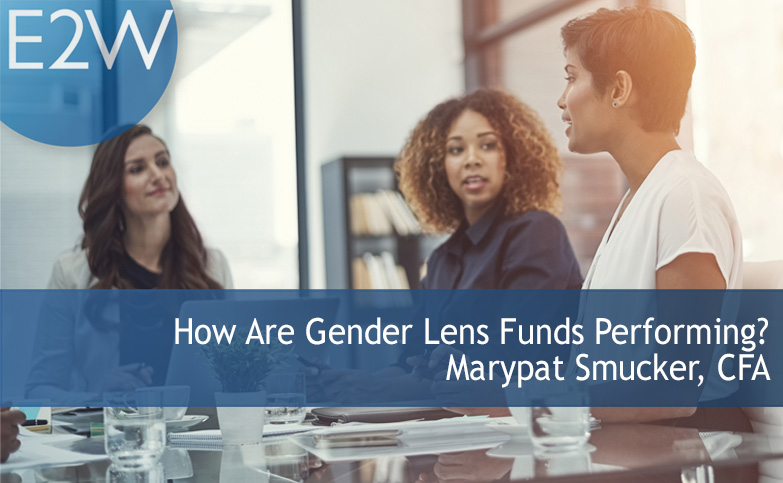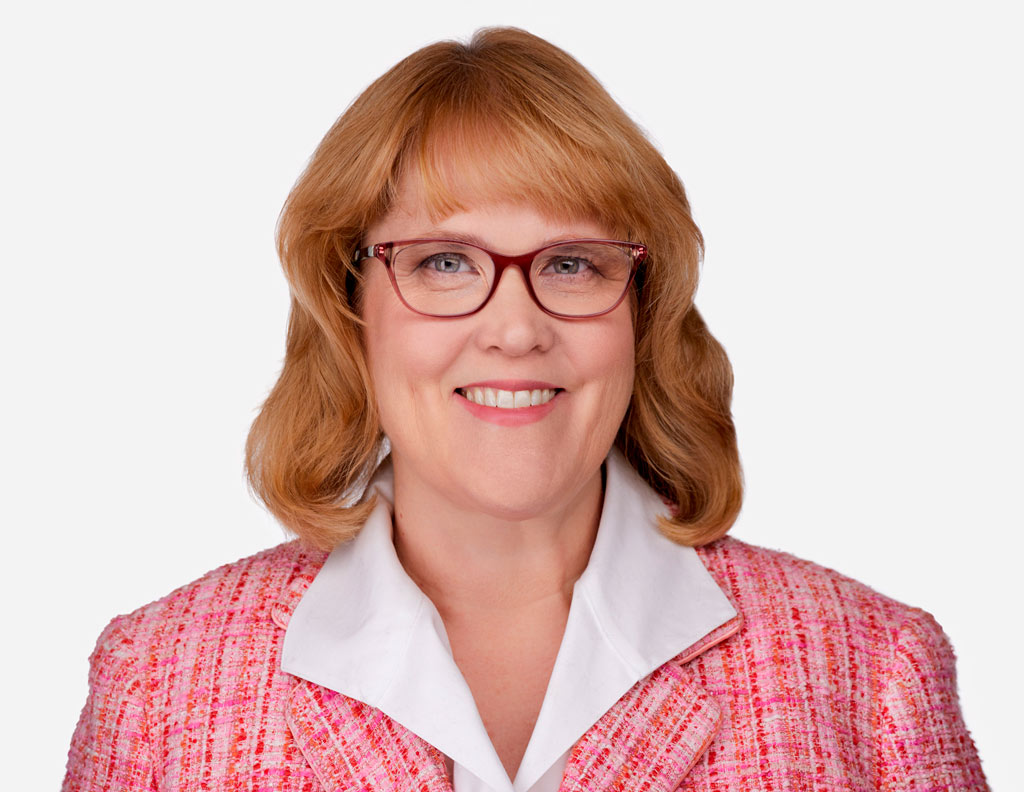
How Are Gender Lens Funds Performing?
Katie.Dix / 04 Feb 2020
The first in a series of articles, written by our special guest contributor, Marypat Smucker, CFA looks at how gender lens funds are performing.
The outperformance of companies with higher women-in-leadership (WIL) metrics has led to the development of so-called gender lens investing. Total publicly available equity and fixed-income offerings within this emerging sector have grown to over $2.4 billion in assets under management (AUM).
So what are the characteristics of the publicly traded equity funds within this space, and how have they performed?
The Development of Gender Lens Investing
Research demonstrates that stronger WIL metrics correlate with superior company performance. Fortune 500 firms with female board members did better than those without them when it came to return on equity (ROE), return on sales, and return on invested capital, according to a 2007 study by Catalyst. Outperformance was even higher among companies with at least three women board members. In addition, companies with women directors performed better on a range of criteria, including share price performance, a 2012 Credit Suisse report found.
Inspired by data like this, Pax World Investments — now Pax World Funds Advised by Impax — proposed investing in women as an asset class. A company’s gender balance status — its WIL metrics — became investable.
The benefits of such an approach have been confirmed in the years since: A 2016 Credit Suisse report demonstrated that “the higher the percentage of women in top management, the greater the excess returns for shareholders.” A 2018 study by Bank of America showed that companies in its coverage universe with more women on their boards from 2005 to 2016 had higher one-year-forward ROE levels and median one-year ROE was higher for S&P 500 companies with at least 25% female executives from 2010 to 2016.
The Gender Lens Equity Sector
So what does the gender lens equity fund market look like? The primary publicly traded funds available to individual investors include mutual funds, exchange-traded funds (ETFs), SICAVs, one exchange-traded note (ETN), and one unit trust. Some of these provide several share classes and multiple exchange listings. In the chart below, they are divided into global and regional equity, then ranked by AUM, which totals $1.3 billion.
Primary Publicly Traded Gender Lens Equity Funds

Gender Lens Equity Funds: Further Criteria

*Sources: Fund fact sheets, Bloomberg, Financial Times
**Closing indicative note value return
***As of 28 February 2019
As the second table demonstrates, all of these funds are multi- or larger-cap, have relatively low investment minimums, and charge average fees. Most have launched since 2015. All employ investment criteria centered on a WIL philosophy that are typically combined with ESG screens. Many use internal WIL tracking indexes. Solactive Equileap is the main provider of external WIL indexes and is built from a universe of developed market stocks with market caps of over $2 billion.
Less than 10% of all portfolio managers are women, according to the latest Morningstar data on mutual funds and ETFs, and that figure has not budged in many years. Management teams in the gender lens sector are well ahead of the mean on this front, with over 60% female portfolio managers.
Gender Lens Shares and WIL Metrics: First Quarter Performance
In the global segment, all funds turned in positive absolute returns for the first quarter, in keeping with broader global shares. In relative terms, the Pax Ellevate Global Women’s Leadership Fund, which offers institutional and individual share classes, edged past the MSCI World Index. The fund manager recently noted that overweighting the highest WIL-rated quartile of companies has been the strongest contribution to outperformance. The AXA fund also outperformed the MSCI World Index, and the RobecoSAM fund performed broadly in line.
The regional funds also ended the quarter higher. Here, relative performance was mixed. The two Japan funds turned in single-digit gains, with the Daiwa ETF outperforming its benchmark. On the other hand, the United States and Canada funds posted solid gains but trailed their benchmarks and major indexes. The Legal & General fund, which is closing in on the one-year mark, trailed the FTSE 100 Index.
What’s Next for Gender Lens Investing?
The global and regional segments both have relatively short histories. So how will this emerging sector hold up over the long term? Can funds differentiate themselves within the sector through their philosophy and investment approach? The impact of regional differences in WIL metrics certainly bears watching, as does sector performance under different market environments.
Despite the performance benefits of higher WIL levels (or metrics), the gender lens space faces a lack of substantive progress when it comes to women in corporate leadership. While women make up nearly half the employees of S&P 500 companies, they currently hold only 5% of the CEO positions, with only two positions held by women of color. Board seats hover stubbornly at just over 20%. In the United Kingdom, the number of female CEOs in the FTSE 350 declined in 2018, while the number of board chairs rose only slightly. Globally, 15% of large companies across 44 countries/territories still have no female board members. Furthermore, women hold only 5.6% of board leadership roles.
Many spotlights have shown on these sticky metrics over the past several years. Yet the numbers remain stuck. Moreover, gender lens funds will find it difficult to both outperform and expand their market-cap range in a limited investment universe. Further complicating matters, since 1972, female Fortune 500 CEOs have been succeeded by another woman only three times, so gender lens funds are likely to shift in and out of the same investments as leadership diversity rises and falls at the firm level.
Nonetheless, the push to incorporate gender diversity into investment criteria is gaining traction on Wall Street. In 2017, Morgan Stanley encouraged analysts to include gender scores in investment analyses. In 2018, State Street Global Advisors, which offers the SPDR SSGA Gender Diversity Index ETF, announced that it will begin voting against all-male boards in the United States, the United Kingdom, and Australia in 2020.
With this heightened focus among asset managers that share in the struggle to close gender pay and leadership gaps, more gender lens funds are likely to enter the sector.
About the Author

Marypat Thenell Smucker, CFA, MA Economics, MS Finance, is a consultant research analyst and investment writer.
Her focus areas include gender lens investing, ESG investing, and women in the global economy. She publishes quarterly updates on the gender lens equity sector. Her global asset management experience includes communications and managing editor positions, as well as analysis roles in emerging markets private equity and global M&A transaction services. As a consultant senior writer, her long-term clients include T. Rowe Price and Jennison Associates.
More reports and articles can be found on her website.
Back to blog



 Women in Financial Services
Women in Financial Services